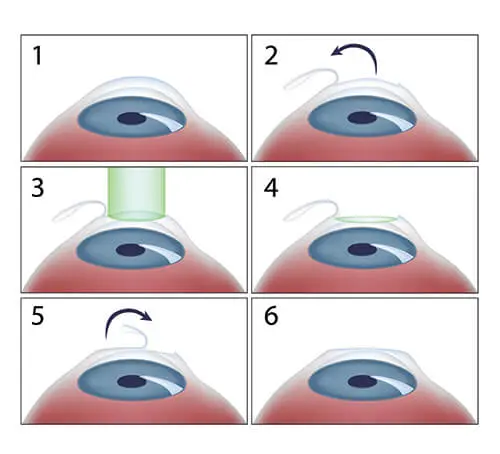
The options that are available today for removing glasses are innumerable. One is bound to be confused as to what to choose since each one of these ‘refractive surgeries’ has a proven record in terms of both – safety and efficacy. The two important surgeries are lens implant and LASIK surgery.
Contents
There are broadly two classes of these refractive surgeries namely –
The first category is added by laser and aims to reshape the cornea. The latter uses lens implants which are replacements of our eye lens with artificially prepared lenses. These lenses are fit inside the eye in either of the two locations – between the iris and the natural crystalline lens, also called phakic IOL, that is present in the eye or replaces the natural crystalline lens of the eye, this type is called the clear lens extraction or refractive lens exchange procedure.
All of the aforementioned procedures achieve 20/20 vision without the need for glasses or contact lenses, safely and effectively, if and only if the chosen procedure is well apt to the status of the individual’s eye and their specific visual needs. Choosing the correct procedure is highly essential and is the first step towards better vision without glasses. It can be done in conjunction with your eye surgeon only after a complete, comprehensive and thorough eye examination.
If one adds up the time taken for processing of paperwork and transfers to the operating room, the time required for both the procedures is roughly the same. However, as mentioned before, LASIK is done on both the eyes simultaneously while certain surgeons prefer to perform lens implants on different days because of the increased risk of intraocular infection.
If you need reading glasses for near vision, not all refractive procedures will address this issue. Hence, this is an important factor to take into consideration while deciding which procedure to opt for.
LASIK surgery is not as expensive as lens implants. It is because of the fact that intraocular lens implants are both invasive and take a longer duration to perform. Also, the additional cost of the artificial lens implants adds to the expense of the procedure and makes it more expensive. However, note that the costs are comparable to, if not exactly the same as, newer technologies of LASIK including femtosecond LASIK and Relex SMILE. You can take health insurance as well.
LASIK would be the recommended and an ideal choice for patients with low to moderate refractive error and no associated eye diseases.
Refractive Lens Exchange or lens implants are performed only if the patient is not a suitable candidate for any other vision correction surgeries like LASIK because it is a highly invasive procedure and is much more expensive. RLE is also the best option for patients who have an early cataract. That being said, these procedures can correct almost any degree of refractive error and the quality of vision after lens implants is believed to be better than that after LASIK treatment.
Phakic IOLs are the best choice for patients who have keratoconus and for patients post corneal surgeries.
Hope this article guided you through your condition and helped you make the best decision for yourself! Remember to get an eye evaluation by your eye surgeon before you proceed with any of these options!
To know more about Lasik and lens implant or other eye surgeries, please visit Eyemantra. Or you can email us on eyemantra1@gmail.com.
We also offer various services like Retina Surgery, Specs Removal, Lasik Surgery, Squint, Cataract Surgery, Glaucoma surgery, and much more.
To book an appointment with expert ophthalmologists with many years of experience, call Now at +91-8851044355.
Related Articles:
Phacoemulsification Surgery: Diagnosis, Process, Benefits & Risks: All you Must Know
Retinal detachment: What is it, Causes, Symptoms, Surgery & treatment in Delhi